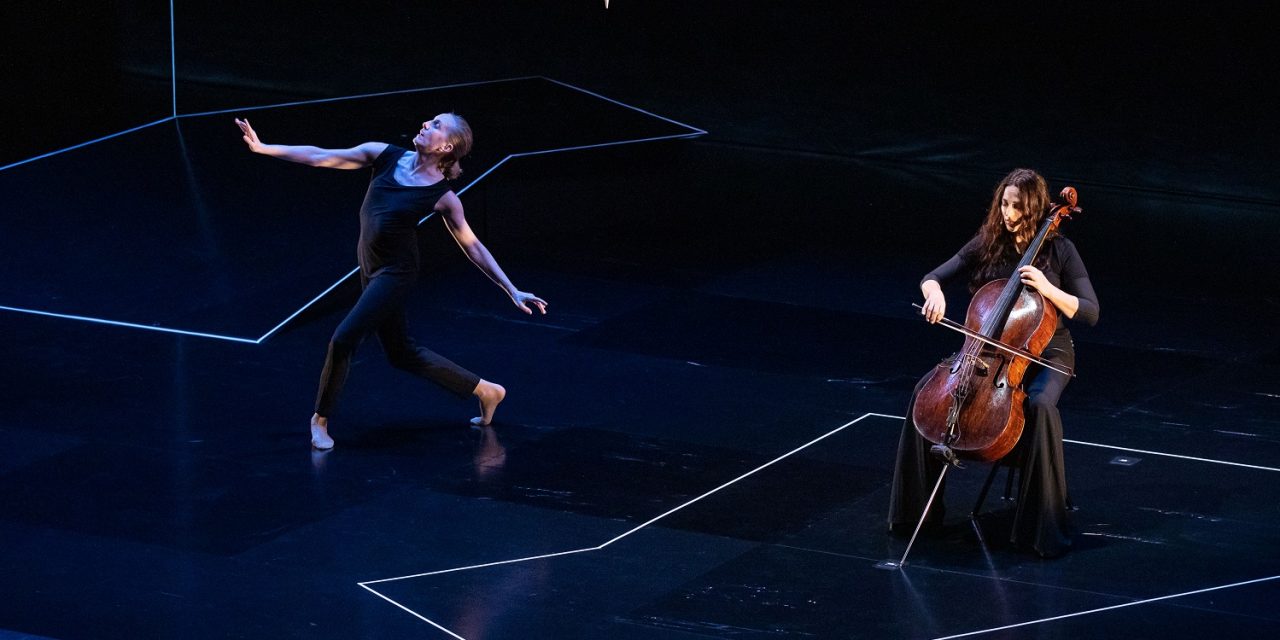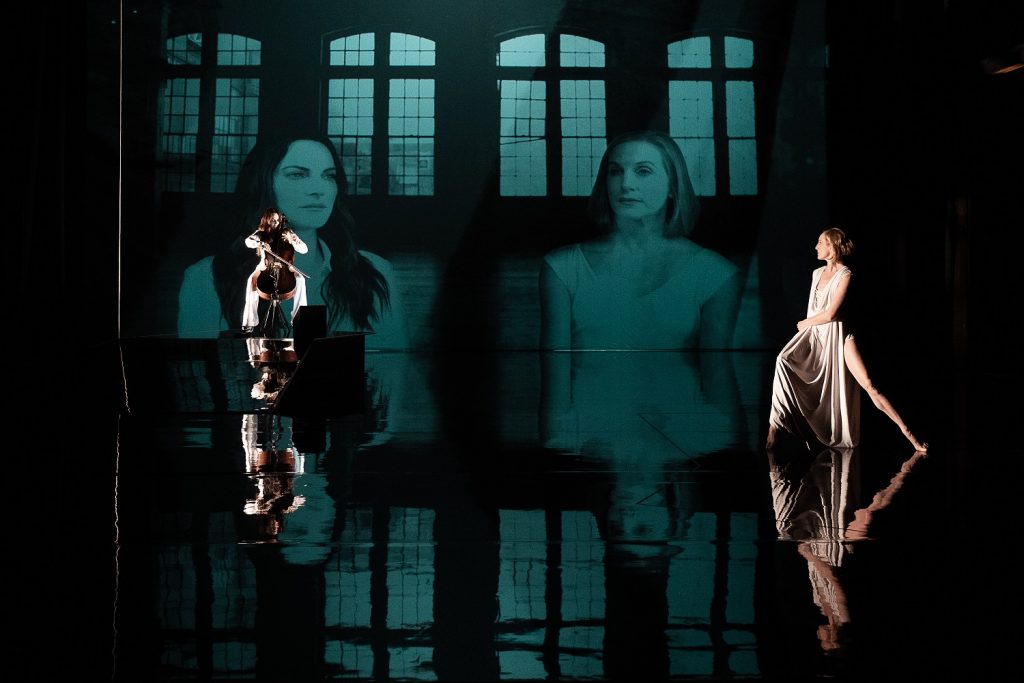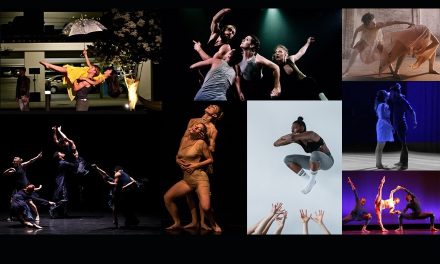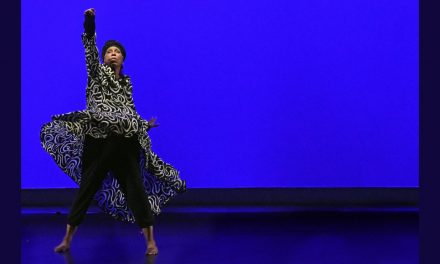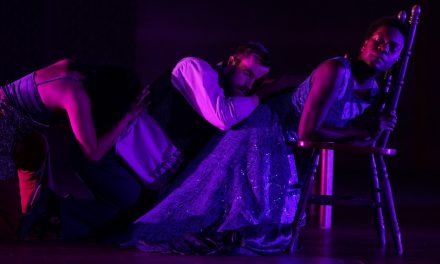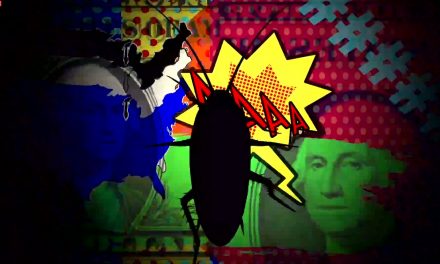At Royce Hall this past weekend UCLA’s Center for the Art of Performance presented the west coast premiere of THE DAY, a stunning production created by the coming together of several extraordinary artists. Postmodern choreographer Lucinda Childs; New York City Ballet veteran Wendy Whelan; and the renowned cellist Maya Beiser performing the music of American composer David Lang, who joined forces with Scenic Designer Sara Brown, Projection Designer Joshua Higgason, Lighting Designer extraordinaire Natasha Katz, and Costume Designer Karen Young to create a journey through time and space reflecting on 9/11.
The Day was the title of the first of two movements presented, and actually the prequel to Lang’s work titled World To Come. On the morning of September 11, 2001 Lang was walking his children to school located near the World Trade Center in New York. At a post-performance discussion, he described how everyone around him hit the ground because of a low flying jetliner, the first of two to strike the two Twin Towers. It was the horror of that entire experience and everything that followed that became the inspiration of World To Come written specifically for Maya Beiser.
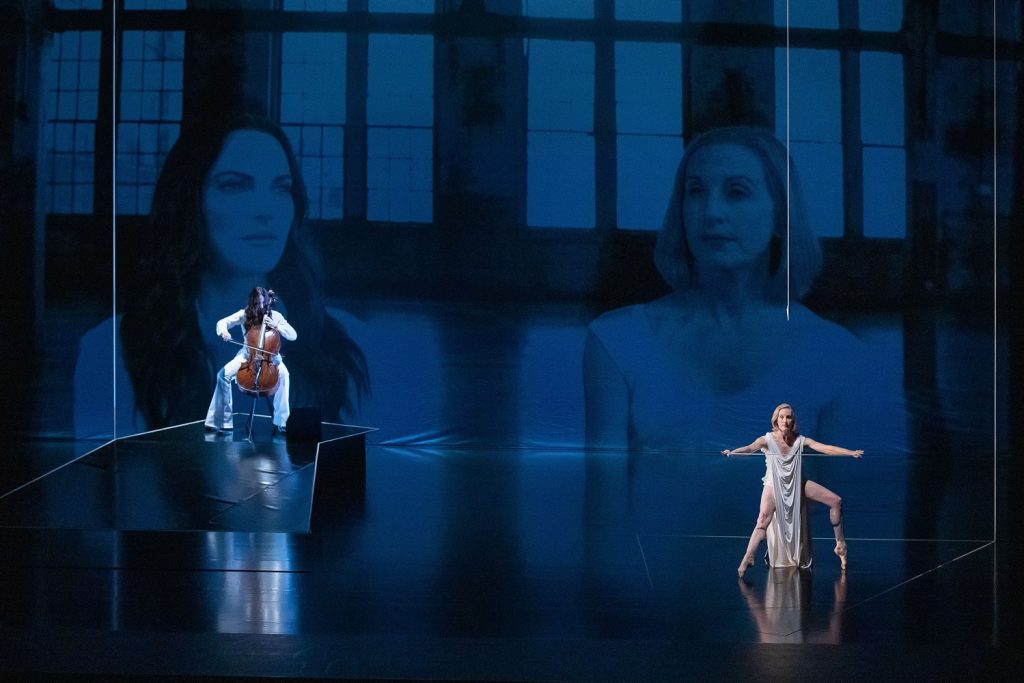
“The Day” – Wendy Whelan, dancer – Maya Beiser, Cellist – Lucinda Childs, Choregrapher – David Lang, Composer CAP UCLA – Royce Hall 10/18/2019 – Photo credit: Reed Hutchinson and CAP UCLA
Beiser performed World To Come for several years before suggesting to Lang that he compose a prequel. Making use of the internet, Lang located sayings by numerous people about what happened to them or what they did on a particular day. “I achieved the perfect engineering drawing.” “I came across it in a local yarn shop.” “I finally became a parent.” Once selected, he listed them alphabetically and composed the music for Beiser to perform while the words, a kind of poem, were spoken. While performing these two works, Beiser continued to imagine a dancer performing alongside of her. She contacted Wendy Whelan and Lucinda Childs and from this collaboration The Day was created.
The set for The Day was a simple ramp leading up to a small platform on stage right and a metal stool with a swiveling seat located on the other side of the stage. Four white ropes, two adjacent to the ramp, and two near the stool, aided one to abstractly envision the twin towers.
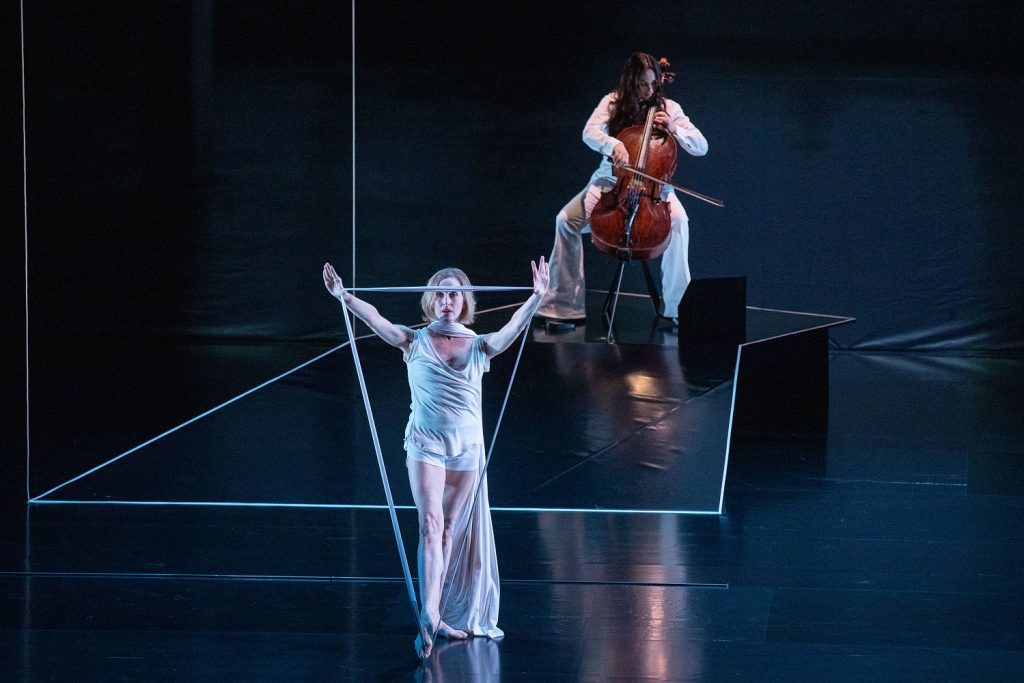
“The Day” – Wendy Whelan, dancer – Maya Beiser, Cellist – Lucinda Childs, Choregrapher – David Lang, Composer CAP UCLA – Royce Hall 10/18/2019 – Photo credit: Reed Hutchinson and CAP UCLA
During the first movement, The Day, Beiser performed on top of the platform while Whelan performed on the opposite side of the stage. Both were dressed in all white; Whelan making use of a white string, a large white elastic loop, a very adaptable white shift, thin white poles, and a piece of white cloth that represented as a suitor, a wedding veil, a baby and a cape for Whelan.
Lang’s music was repetitive but designed so that none of the repetitions were exactly the same. Childs’ choreography was likewise repetitive, and like the set, geometric and minimal. This repetition of movement allowed one to watch the projections – also basically white and/or gray – or to become completely engrossed in the performance of Beiser whose physicality was as beautiful as her cello playing.
We learned during the Q&A which followed the performance that Whelan improvised most the movement in the first section. She explained how Childs had given her lots of perimeters but absolutely no rules. Making use of her props, Whelan created triangles and other shapes such as a cross that she formed while performing with the two white poles; poles that appeared to be permanently attached to the floor and moving on tracks. It was an illusion that was fascinating to try and figure out.
World To Come found both performers costumed in black, with Whelan making use of the platform/ramp and Beiser occupying the stool. The lighting and the imagery projected on the back wall were also darker, including a cello that crashed to the floor and shattered in slow motion to represent the wreckage falling from the towers. A gray haze of smoke outside the windows of an abandoned building brought back images of the dust covered buildings and people walking around lower Manhattan.
In World To Come the movement was more like what audiences might consider dancing, but the repetition of phrases and the minimal structure of them continued, and the geometric shapes were now created with Whelan’s arms and legs. Beiser performed along with a recording of her playing the same work while periodically singing haunting deep resounding vocals that spoke to the heartbreak of souls lost during 9/11.
For me, the power of The Day came from its complete picture. It was a performance that caused me to experience time and space in an entirely surreal way, like a slow-moving Marcel Duchamp or Robert Rauschenberg painting hanging on an art gallery wall might make one feel. Here, the music and Beiser’s physicality blending with the minimal lines of Childs’ choreography.
The first movement, The Day, looked and felt stark, sculptural and abstract. World To Come, however, was rich with imagery and emotions. I left the theater hoping that I would have another opportunity to see this incredibly artful work.
Written by Jeff Slayton for LA Dance Chronicle, October 21, 2019.
To visit UCLA’s Center for the Art of Performance website, click here.
Featured Image: “The Day” – Wendy Whelan, dancer – Maya Beiser, Cellist – Photo credit: Reed Hutchinson and CAP UCLA

